As an adult, how are you able to maintain your writing from the child’s-eye view?
I grew up in a family with a mother and father who valued children first, and thought that the children in their lives — myself and older brother and cousins, and my friends — mattered more than anything and anyone else. Our house from as far back as I can remember was always filled with children, from the time I was very little and through my college years. So observing and being fascinated with and loving to be with children of all ages is in my genes. Then when I was a graduate student at The Bank Street College of Education, I took a course called “Observing and Recording The Behaviors of Young Children.” In that course, each week we spent about seventy percent of our time observing a different child, or a small group of children, writing down the words they said and the reactions/emotions they had. Then we would go back to our seminar and with teacher Dorothy Cohen and the other students discuss what we had recorded. Then we would talk about how what we observed and recorded could help us better understand that child and what was going on with that child at that moment — the same kind of thinking I do when I’m thinking about or writing a book. I still find myself wherever I am, in the park, on a bus, in the supermarket, doing what I learned in that graduate school course — observing and recording the words and actions of young children. When a child says something or does something that sparks my interest, I write down the words that child is saying and/or what the child is doing. And sometimes what I have written down leads to a book idea — an idea or story that I always hope is written from a “child’s-eye view.”
 Let me tell you about how a forthcoming picture book of mine, Mail Harry to the Moon! began. A couple of summers ago, while visiting with family to meet their new baby Harry, one of their friends stood up to say goodbye. That’s when Harry’s four-year-old sibling asked the family friend, “Where are you going?”
Let me tell you about how a forthcoming picture book of mine, Mail Harry to the Moon! began. A couple of summers ago, while visiting with family to meet their new baby Harry, one of their friends stood up to say goodbye. That’s when Harry’s four-year-old sibling asked the family friend, “Where are you going?” “Chicago,” she answered. “I’m taking a plane to Chicago.”
“Is Chicago ver-rrrry far away from New York? Rrr-really far, far away from me, and my mommy and my daddy?”
“Yes,” the friend answered. “And Chicago is so windy that sometimes things — little things — blow away.”
Then without skipping a beat, the four-year-old said, “Oh then — take baby Harry to Chicago with you. He’ll like it there. Okay?” Needless to say, there was a look of great disappointment on the four-year-old’s face when the family friend did not walk out the door with baby Harry.
That story is now a picture book I have written. But in my picture book, I send baby Harry much further away than Chicago. I send baby Harry all the way to the moon — thus the title of the book: Mail Harry to the Moon! In the book, Harry’s older sibling makes all kinds of angry threats about baby Harry, such as, “Throw Harry in the trash!” “Stick Harry in the zoo!” “Put Harry back inside Mommy!” And finally, “Mail Harry to the moon!” And then remorse sets in. What if Mommy and Daddy really did send Harry to the moon? And alas, the big brother comes to the rescue and tells us, “Soon I was on the moon! And Harry was there. He was so excited to see me, he burped!”
The way in which this book began, a chance get-together with my great nephew, is what provided me with a child’s-eye view of how a young child feels about his new adorable/adored baby brother, and that experience allowed me to move forward and create the story for Mail Harry to the Moon!
Who do you see as your audience and how does it affect your writing?
The audience I write for is always children and I always hope the words and stories I write will resonate with children. If the books I write also appeal to adults, then it goes without saying, I’m also pleased. But when I write a book, I don’t worry about adults and what they will think about what I write, whether they will approve or disapprove of what I write. In fact, I always try to “put on blinders” when I write and not think at all about the adults, even though they are the ones who buy and/or choose books for children — be they parents, teachers, or librarians.
 For example, I did not worry about what any adult would think when the child in my picture book Goodbye Mousie, whose beloved pet mouse has just died, says, “I hate all this dying stuff!” This book was beautifully illustrated by Jan Ormerod. Nor did I worry when in Mail Harry to the Moon! baby Harry’s older brother says, “Put Harry back inside Mommy!” or “Flush Harry down the toilet!” These are things children say and/or think.
For example, I did not worry about what any adult would think when the child in my picture book Goodbye Mousie, whose beloved pet mouse has just died, says, “I hate all this dying stuff!” This book was beautifully illustrated by Jan Ormerod. Nor did I worry when in Mail Harry to the Moon! baby Harry’s older brother says, “Put Harry back inside Mommy!” or “Flush Harry down the toilet!” These are things children say and/or think. If a story is going to ring true to children, then it has to reflect their stories and words, the way children really are. As a writer I am not afraid to write about children’s strongest and most powerful feelings — feelings that range from love to anger, to jealously, to sadness, to joy. The expression of these kinds of feelings is part of every child’s life. And if those feelings are included in the stories we write for them, our stories can in fact help reassure children and help them to understand that the feelings they have day-in, day-out, are perfectly normal and that they are not alone in having those kinds of feelings.
When did you start writing?
I really started to create stories in book form in kindergarten, when every morning, we would dictate another line of the story we were making up to one of our teachers, who would write down our words. Then we would illustrate those words. I loved doing that and remember it well. But the truth is I never planned to be a children’s book author. It just happened. But I was editor of my high school newspaper and college yearbook. After graduate school, I became an elementary school teacher at the Bank Street School for Children in New York City and taught children, among other subjects, how to write. So all this must have planted the seeds to my becoming a children’s book author. But here’s what really did it.
After being a teacher, I began to work with two veteran and talented children’s book authors, Irma Black and Bill Hooks, at the Bank Street Writer’s Laboratory. Five mornings a week, sitting together with pencil, paper and a toy piano, we wrote a song and the five-minute, five-day-a-week opening segment for a year for ABC’s Captain Kangaroo show. Here I learned to work with others, Irma and Bill, to create something better than anything I could create by myself. Collaboration became a habit, and today I am so lucky to be able to collaborate with extraordinarily talented illustrators — such as Michael Emberley, Nicole Hollander, Jan Ormerod, Harry Bliss, and Molly Bang — so that hopefully my text and their art become seamless. My first picture book was published in 1977.
Where can you do your best thinking?
I am not sure that there is any one place where I do my best thinking. No matter where I am, I am almost always thinking about the book I am currently writing, or about possible new book ideas, or books that are in the process of being illustrated and designed. In fact, it is hard to turn off the “book thinking part” of my brain at all. However, after taking down notes and writing down ideas on a legal pad on what could possibly be a book, when I have a few opening pages and some lines I think work, I start writing on my computer. At that point, which often takes me a long time to get to, most of my thinking goes on when I am writing on my computer, and trying to make a story work and read well and be fun and/or interesting to read. A quick aside: I am totally dependent on, one hundred per cent addicted to my laptop computer, so in reality, I can write almost anywhere. Yes, I still think about what I am writing while peeling an onion or in the bathtub. But I don’t put that thinking in the book until I am back on my computer working on the book.
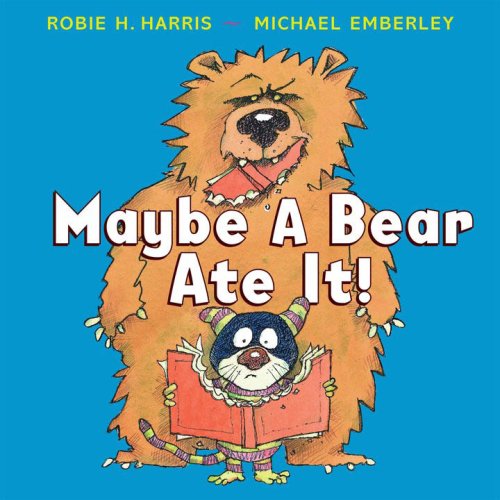 Let me play out a scenario with you, as a way to answer your question, and think back to how I wrote my brand-new picture book, Maybe a Bear Ate It!, which is filled with hilarious illustrations by my buddy Michael Emberley. These are the opening words of the book: “It’s gone! It’s nowhere! I can’t find it anywhere! Where is MY BOOK? I need MY BOOK!” These very words cried out by the child-creature in this book mirror the frantic feelings I have whenever my favorite book-of-the moment goes missing. Just recently, a librarian told me how many times not only children, but also adults, run up to the library desk, so distressed that they have lost the book they are in the middle of reading, and declare in a loud and clear voice, “I LOVE MY BOOK! I NEED MY BOOK!” And then, the librarian told me, they ask in a desperate voice, “Do you… does the library… do you have another copy of my book I can read right now?”
Let me play out a scenario with you, as a way to answer your question, and think back to how I wrote my brand-new picture book, Maybe a Bear Ate It!, which is filled with hilarious illustrations by my buddy Michael Emberley. These are the opening words of the book: “It’s gone! It’s nowhere! I can’t find it anywhere! Where is MY BOOK? I need MY BOOK!” These very words cried out by the child-creature in this book mirror the frantic feelings I have whenever my favorite book-of-the moment goes missing. Just recently, a librarian told me how many times not only children, but also adults, run up to the library desk, so distressed that they have lost the book they are in the middle of reading, and declare in a loud and clear voice, “I LOVE MY BOOK! I NEED MY BOOK!” And then, the librarian told me, they ask in a desperate voice, “Do you… does the library… do you have another copy of my book I can read right now?”Late one night when I could not find the book I was reading, I too became more and more desperate. I looked everywhere for it — under the bed, in the laundry hamper, and even in the most ridiculous and improbable places. Maybe in my haste, I reasoned, when putting away the dinner leftovers, maybe I had put the book in the refrigerator. Or when I went to wipe up a spill on the floor, had I actually thrown the book in the trash? But no, thank goodness I had done neither.
I loved that book. I loved that story. I had to know how it ended. I had to know what happened at that very moment, not the next morning, or next day, or next week! And I had the same worry the child-creature in Maybe a Bear Ate It! shouts out, “I can’t go to sleep without it!” Panic set in at the thought of a sleepless night!
Then I thought back to when my children were young and those nights they couldn’t find their favorite book-of-the-moment, and how sad, worried, and upset they felt. How would they ever fall asleep without their book? Had something horrible happened to their book? Perfectly normal worries for a young child. And then I remembered how relieved and happy they felt when finally they found their beloved book.
The night I lost my book, I felt the same way my children had felt many years ago. A few days later, when I began to write Maybe a Bear Ate It!, the first few lines that popped into my head were those very real worries and very real fantasies young children might have about the book they may have lost. “Maybe a bear ate it! Maybe a stegosaurus stomped on it! Maybe a shark swallowed it!” So my first thinking and perhaps my best thinking for this book happened late one night — in bed!
Why did you need to write this book?
It’s not that I need to write a book. It’s that I want to write a book. In fact, once I have an idea that grabs me, it literally feels as if I have been “grabbed by a book idea,” and then the operative word for me is want. Once that happens, I really, really want to write that particular book and start in by trying to figure out the story for that particular book. And the story, the plot, simple as is it, for Maybe a Bear Ate It! is the story of a young child who loses his or her beloved book of the moment, and imagines that something as terrible as a bear eating or a stegosaurus stomping on it has happened to the book. And the big problem is that this child — and might I add that the same is just coincidentally the same for me — cannot go to sleep without his or her beloved book. So what to do? This child creatures looks for it, and often in unlikely places, like the sink, but finally, well I won’t tell the end… But really this is a story, a picture book about falling in love with a book, which if we are lucky, we all do.
I also wanted to write this book because it was a challenge. I was writing it for very young children and so I felt it had to have very short text, even some wordless pages — something I had never done before. I like to talk a lot, write a lot of words and I was not sure I could write something that had few words and still tell a story that young children would respond to and think was fun to listen to. (I knew that Michael’s drawings would be fun to look at.) So the challenge for me was: Could I write a different kind a book? And that was one of the things that made me want to try to write this book.
And yes, once an idea has grabbed me, that’s when I feel compelled to write the book, and at that point, you are correct, I need to write the book.
What’s next for you?
I am thrilled and feel so lucky that I have three new picture books coming out in 2008. Maybe a Bear Ate It! was just published. Mail Harry to the Moon! will be published in June. And The Day Leo Said, “I Hate You!” will be published this coming fall.
But I am also excited about future books in the works. I have written a series of four nonfiction picture books for children age two-and-a-half and up. Michael Emberley is just beginning to illustrate the first book. This series is called All About Us books. Creating these books for very young children and being accurate to the science and making them fun and understandable to younger children presents a challenge. But together with our editor and designer, the first book is beginning to come together in new ways that have not been in previous books of ours before. This first of these books will be published in 2009.
I have a picture book coming out in 2009 called, The Biggest, Baddest Rip! This picture book is being illustrated by Elizabeth Matthews. It is about a young child who “grows up” as his quilt “grows down,” and who finally realizes that he does not have to give up his raggedy old, ripped-up quilt just yet, because he is “not all big” yet. I cannot wait to see Elizabeth’s first set of drawings for this book! And I am currently working on some new picture books that are different from books I have done in the past. Somehow, they seem to be taking a new direction, a new form, a new voice, and that is exciting to me.
Tomorrow Robie H. Harris will be at Kids Lit talking about Freedom to Read and Freedom to Write. Then catch her at Bookshelves of Doom on Friday for a discussion on “Being the Author of Challenged Books.”

















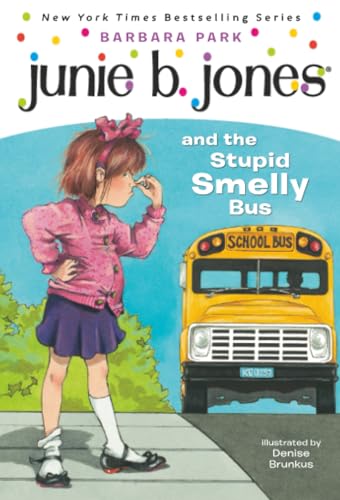



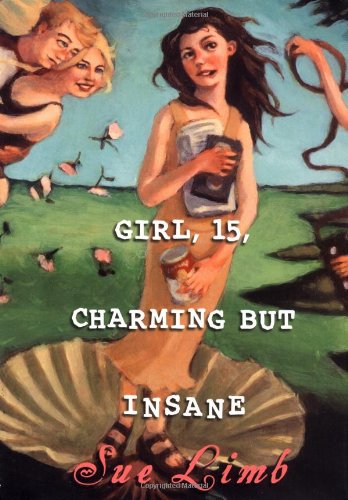
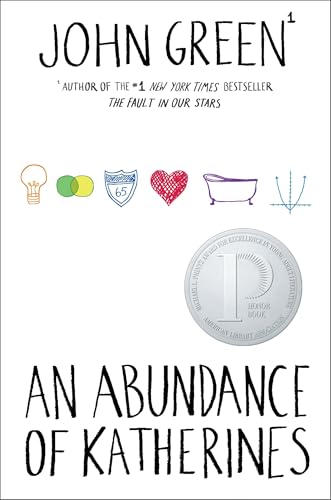
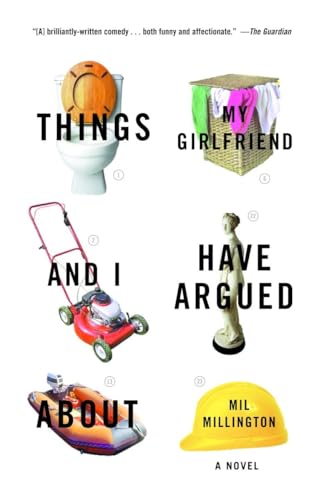
2 comments:
Great interview--thanks!
Hah. You and me and Denny's, chickie. I love the concepts behind Mail Harry to the Moon -- the real, true, honest feelings of a kid that say, "Geez, somebody take this kid back!"
Post a Comment